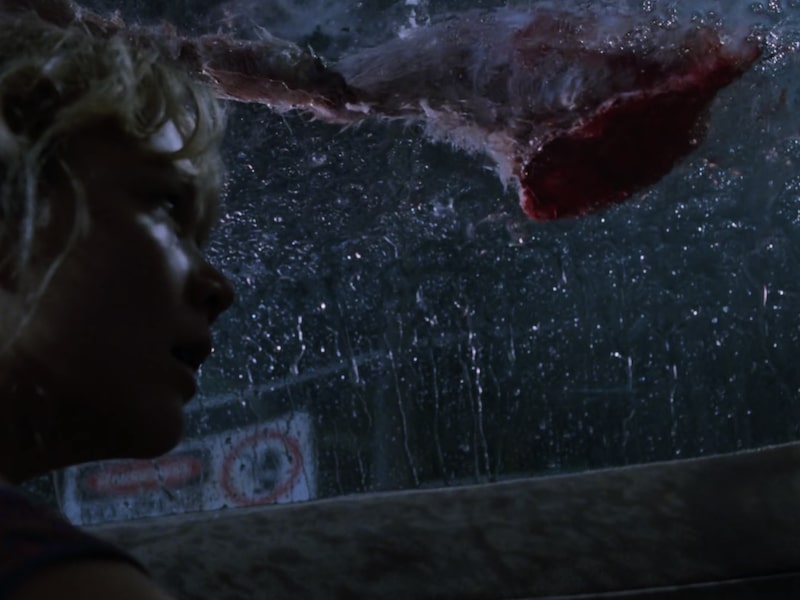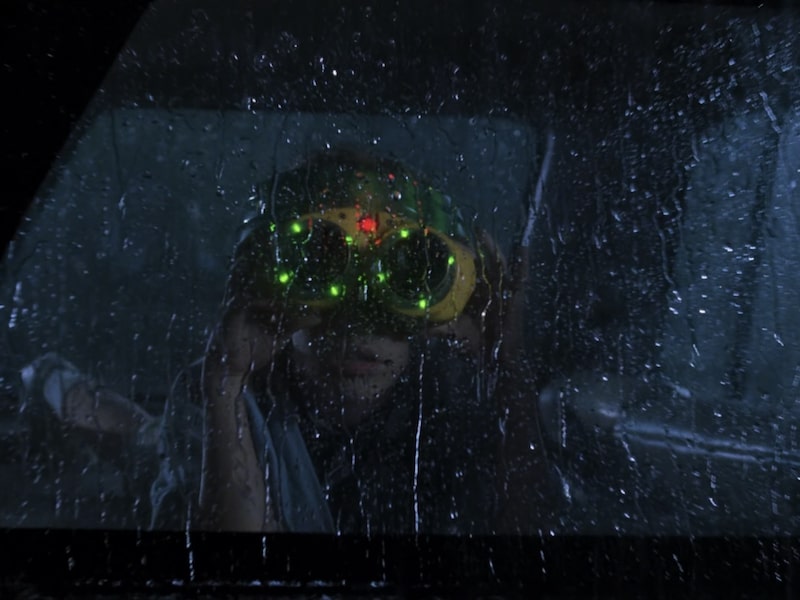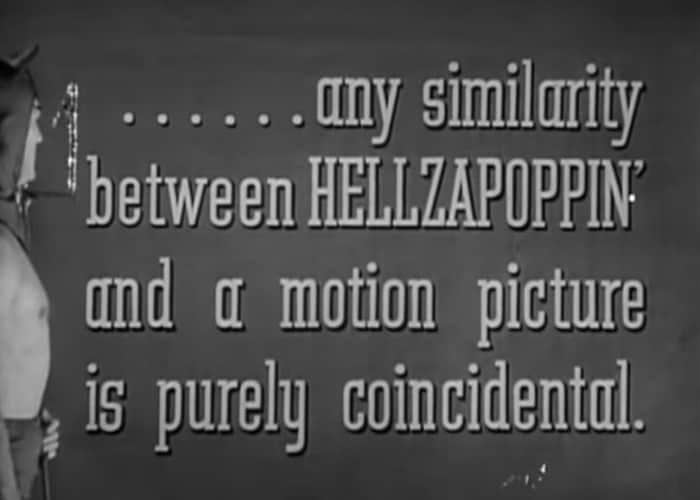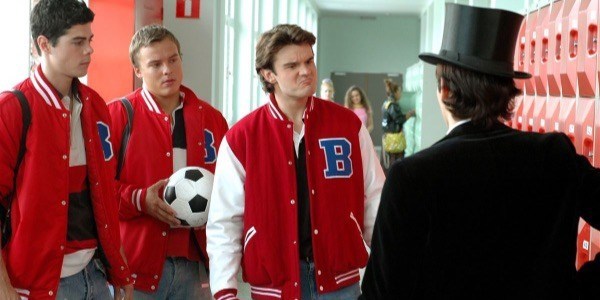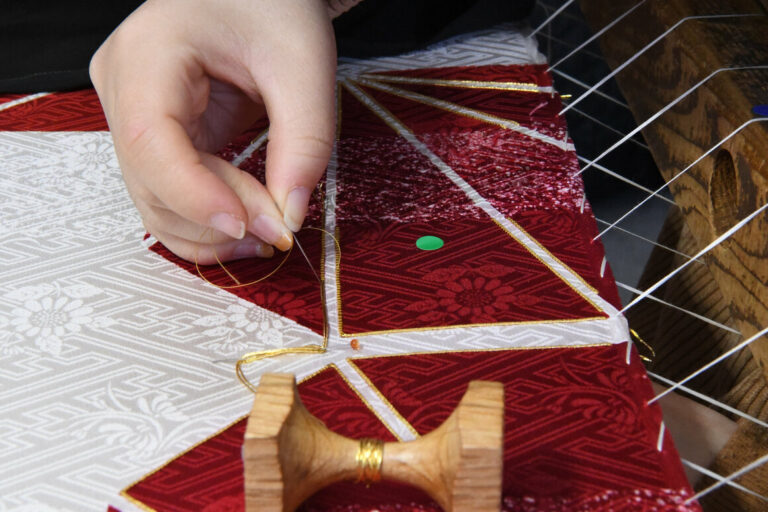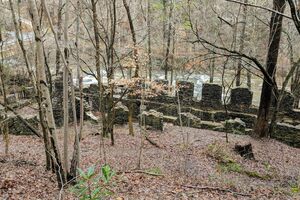How They Designed The T-Rex Roar in ‘Jurassic Park’
Welcome to How’d They Do That? — a bi-monthly column that unpacks moments of movie magic and celebrates the technical wizards who pulled them off. This entry explains how they designed the roar of the T-rex in Jurassic Park.
What are some of the most memorable movie sound effects? The threatening hum of an unsheathed lightsaber? What about the ghostly gurgling in The Grudge? Or the Wilhelm scream?
Well, for my money, there are few examples of sound design as singular, recognizable, and soul-shattering as the T. rex roar in Jurassic Park. Of the film’s three Academy Award wins, two were for sound. Jurassic Park is literally the reason the surround sound Digital Theatre System (DTS) was proliferated in American cinemas. Sound is an enormous part of how Jurassic Park tells its story, how it impresses a sense of awe, danger, and scale.
And in a sea of spectacular sound design, the T. rex roar stands out. It is a rare instance of a sound effect being as iconic as its accompanying visuals. And the film knows it. The introduction of the T. rex (and of its spine-tingling bellow) is one of the most spectacular scenes in the film.
We hear the T. rex well before we see it: a distant, low, and disturbingly steady thud. An unexpected storm has hit Isla Nublar at the same time a treacherous employee has disarmed the park’s security system. The electrical track powering the guests’ state-of-the-art jeeps has lost its charge. Which is unfortunate considering they’ve come to a stop right in front of the T. rex enclosure.
The bleats of a baited goat fall ominously silent as our heroes wait for the power to return. The plastic water cups on the dash begin to tremble. Suddenly, a bloody goat leg smacks the jeep’s sunroof — coinciding, as all good horror moments do, with a crack of lightning. An all-too-recognizable tiny arm tests the now un-electrified fence and a guttural growl rumbles through the rain.
The creature slashes through its pen, each footstep thundering with the weight of a felled sequoia. Glistening in the downpour, the T. rex bends forward and lets forth a deafening roar; a primal scream that tells you everything you need to know about its power, its size, and its intentions.
How’d they do that?
Long story short:
By mixing the recorded vocals of a baby elephant, a tiger, and an alligator.
Long story long:
Like most of Jurassic Park‘s dinosaur sound effects, to create the roar of a long-dead reptile from scratch, sound designer Gary Rydstrom looked to … less extinct creatures. Rydstrom and his team spent months recording animal vocalizations, which were then experimentally mixed and edited.
As Rydstrom recalled to NPR in 2013: “We started recording all kinds of weird animal sounds … I tried to get every interesting animal recording we could find, not even caring right away what they would be for … Then you try to sift through [the recordings] in the studio and see what’s interesting.”
And in a 2015 interview with Vulture, he explained, “One of the fun things in sound design is to take a sound and slow it down It becomes much bigger.”
To accomplish the theater-shaking T. rex roar, Rydstrom was looking to create something that sounded otherworldly and massive but still believable and organic. And, most importantly: he was trying to establish an ancient, elemental enemy.
According to the behind-the-scenes book The Making of Jurassic Park: An Adventure 65 million Years in the Making, the infamous roar of the T. rex was a composite mix of a baby elephant’s squeal, and alligator’s gurgle, and a tiger snarl.
The very deep alligator vocals acted as the low-frequency element of the final roar. However, as Rydstrom stresses, the key part of the sound is the high-frequency element: the baby elephant.
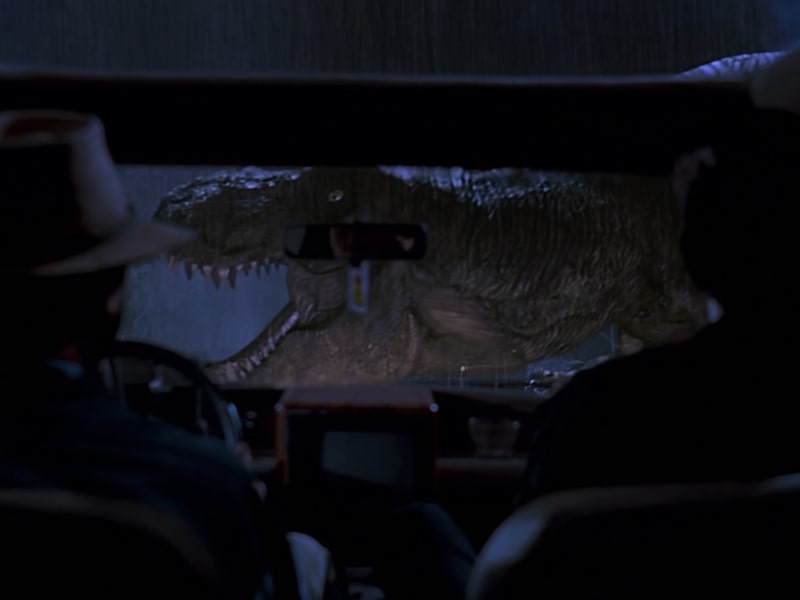
Rydstrom describes how, during the recording session, the baby elephant only did the iconic “cute high-pitched scream” that forms the basis of every T. rex roar in the film once. “We kept trying to get it to do it again, and the handlers were saying, ‘We never heard it do that before; that’s a weird sound.’”
As Rydstrom stresses, the introduction of the T. rex is a scene expressly planned around sound design. “I think maybe other directors would have had a shock moment where you see the T. rex show up out of the blue … Spielberg was great in the T. rex scene by getting several minutes of tension because you knew what was coming. And you knew it because you heard it before you saw it … it’s nice when movies think about sound that way.”
What’s the precedent?
First off, you may be wondering what a real-life T. rex sounded like. Well, as anyone with a passing fancy in paleontology will tell you, there is a sizable discrepancy between the portrayal of dinosaurs in popular culture and what we know about them from the fossil record. And look: scientific consensus and what best serves the story aren’t necessarily the same thing. After all, managing realism with what compels an audience is one of the great balancing acts of movie-making.
To boot, when Jurassic Park was being filmed, only seven (ish) T. rex skeletons had been discovered. So suffice to say: what the creature sounded like was up in the air. Creative liberties are more than understandable when something’s been extinct for roughly sixty-five million years.
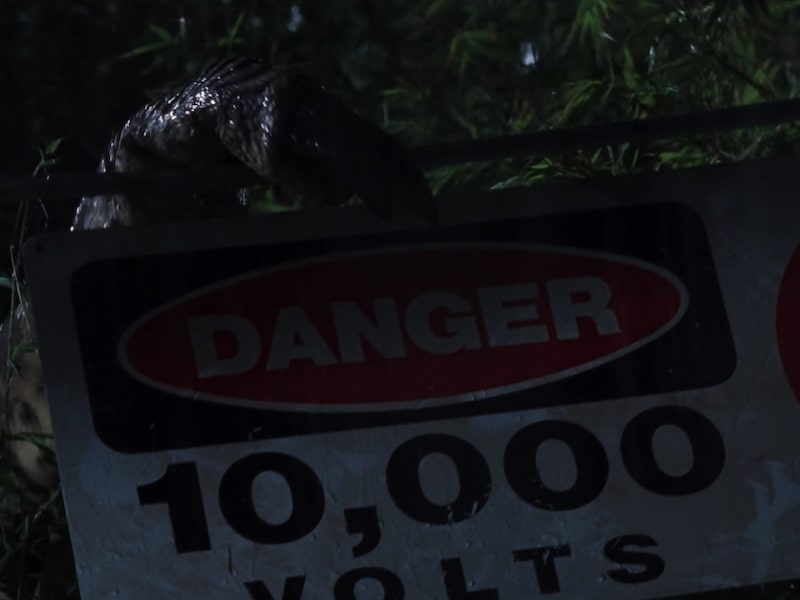
For the curious: the best guess is that a real-life T. rex probably sounded like their closest living relatives: Crocodilia and birds. A study from 2016 suggests the T. rex did not roar, let alone open its mouth to communicate. Instead, they relied on closed-mouth vocalizations. They likely hooted, cooed, and boomed, not unlike modern-day emus and ostriches — which is way more ominous than what you’re imagining, trust me.
To Rydstrom’s credit, the throaty sound the T. rex makes right before and after it engulfs the goat does bear a resemblance to this kind of throaty vocalization. The source of that particular sound effect could be an alligator or a koala, both of which Rydstrom cites as part of the mix. Experts, weigh in!
Most dinosaurs didn’t have larynxes or syrinxes (a vocal organ found in birds) and likely relied instead on deep bass vibrations that humans potentially couldn’t hear but could almost certainly feel if the source was big enough. Think of that vibrating water glass on the jeep dashboard, but instead, it’s your bones.
So, if anything, T. rex sounded like the opening cellos in the Jaws theme. It’s all rumble and no roar, but somehow that’s just as — if not more — terrifying.
The first cinematic debut of the Tyrannosaurus rex was all the way back in 1918 with The Ghost of Slumber Mountain. The silent film featured stop-motion animation by the great Willis O’Brien, who would go on to also animate the dinosaurs in 1925’s The Lost World.
Eight years later, O’Brien lent his talents — and his dinosaur models — to 1933’s King Kong, which, notably, was a sound picture. In King Kong, the T. rex‘s shrieks are a mix of cougar screams and the sound of compressed air. Kong’s own roar was a combination of lion and tiger vocalizations. Technicians then played the resulting mix slowly in reverse.
In truth, creating a mix out of animal sounds is one of the oldest tricks in the sound editor playbook. To this point: Rydstrom’s mentor, Ben Burtt, used animal recordings for many beasts in Star Wars. Burtt created Chewbacca’s voice by mixing walrus, camel, and tiger sounds. He also used slowed down audio of a “bathtub full of raccoons” for Dagobah’s unseen swampy wildlife.
Both the fearsome Rancor and the yeti-like Wampa made use of elephant sounds recorded at the Oakland Zoo. Burtt created the calls of the lumbering Tauntaun with “an Asian Sea Otter that was recorded at a game farm to the south of [San Francisco].” Horse whinnies played backward brought the horrible asteroid-dwelling Mynocks to life.
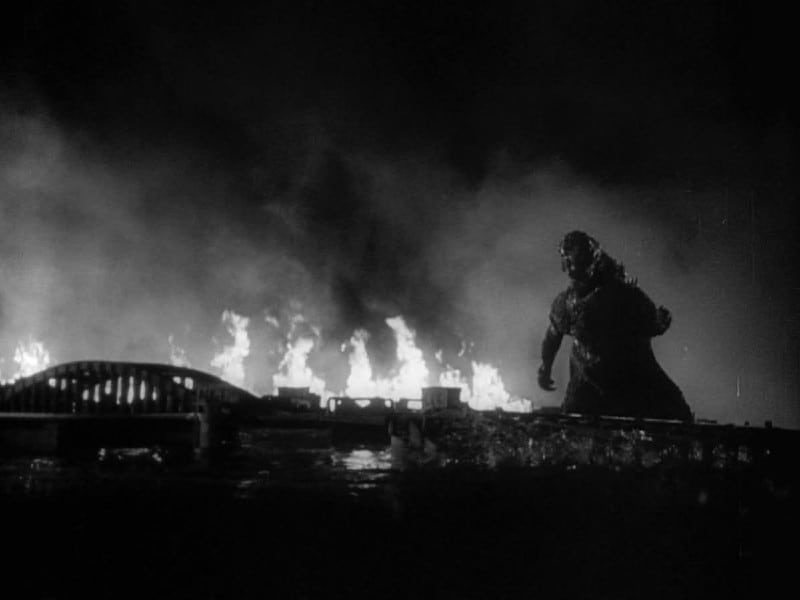
If there is a roar as iconic and thunderous as the T. rex‘s in Jurassic Park, it’s titular King of Monsters in Godzilla. Reportedly, the team of the 1954 original film experimented with various animal sounds. But they were unable to achieve the desired sense of unfamiliarity and scale.
According to the film’s composer, Akira Ifukube, the problem was that no matter how many combinations and distortions they tried, the result was always too recognizable. Eventually, Ifukube found a deep, grating solution: rubbing a coarse leather glove coated in resin up and down the lowest string of a contrabass.
Ultimately, for all its creativity and precedent, the singular power of Jurassic Park‘s T. rex roar is a narrative one. As Rydstrom put it during a 2004 talk hosted by the American Cinematheque and MPSE (Motion Picture Sound Editors): “Sound effects, to me, are not just to make the unbelievable believable … They’re really there for the sake of storytelling … to give us a sense of fear [and] a sense of who these dinosaurs are.”
Well, in one sound we know exactly who the T. rex is, at least in this story (and in our nightmares). We probably won’t look at baby elephants the same way again.
